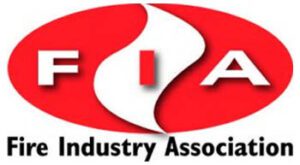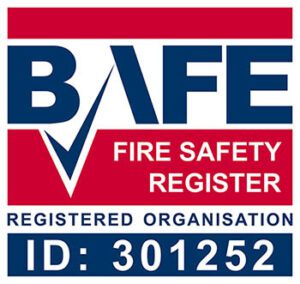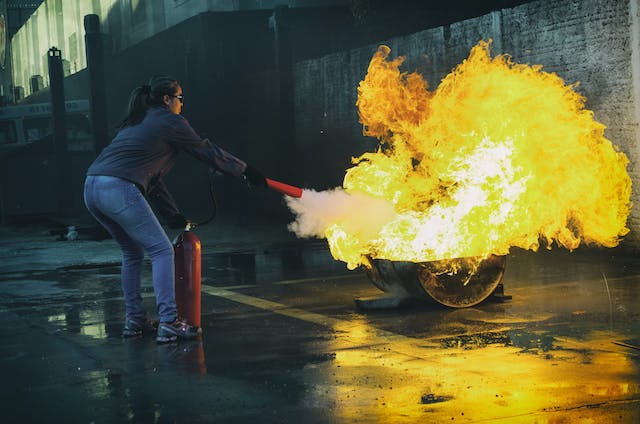Not all fires are the burning infernos that we see on dramatic news bulletins.
However they all have the potential to spread at a rapid speed and quickly get out of control.
For this reason, it can be difficult to contain a fire once a flame has been ignited and the damage it can cause is often devastating.
At best it can result in costly restoration, at worst loss of life.
Many fires are caused by electrical short circuits and gas leaks. It might begin with a small spark or a huge explosion.
Many items within our homes, workplaces and favourite haunts are flammable, so give the fire the fuel it needs to grow.
It can quickly expand in every direction, creating an unbearable heat and toxic smoke.
This can quickly make it difficult for people to breath, see, get orientated and take action.
Safe Evacuation
All workplaces and public buildings should be fitted with fire extinguishers, but in many buildings few people have had adequate training in how to confidently use these extinguishers.
In most cases, by the time the fire has been identified, there is only a small window in which a fire can reasonably be tackled with these devices.
For this reason, the priority is always to get everyone out of the building as efficiently and safely as possible.
The more quickly the fire is identified, the greater the chance that everyone will be able to safely evacuate.
Automatic fire alarm systems therefore offer a life-saving service. They pick up signs of smoke and heat and respond by raising the alarm.
Fire Safety Plan
One of the first steps in a fire safety plan is to gain a detailed understanding of the particular fire risks within your premises.
You can then use this assessment as a basis for putting measures in place that minimise these risks.
The assessment will also help you to install the most appropriate devices for your requirements.
If you aren’t confident in carrying out a thorough risk assessment, a fire safety company can carry it out on your behalf.
They can then make appropriate recommendations for the actions that need to be taken.
Fire Alarms
In the case of fire alarms, you need to ensure that when activated, it can be clearly heard in every part of the building, including the toilets and above the sound of workplace machinery.
In larger buildings, fire alarms signals can be divided into zones, which allow areas closest to the fire to take priority in terms of evacuation.
Fire alarms can be connected to other devices within your premises, such as automatic fire doors, which close when the alarm is activated, or to external systems, such as alerting the local fire service.
This may be excessive in many workplaces, but essential for lowering the risk in others.
A professional fire alarm installer will ensure that you have the best system to suit requirements.
Staff Training
Once fire safety measures have been installed, it is important that all staff receive fire safety training.
They should know how to activate the alarm, where safety equipment is stored and the action to take when the alarm sounds.
They also need to be made aware of the importance of keeping escape routes clear, fire doors unblocked and fire equipment in easy reach.
All employees should know where to gather outside the building following an evacuation and the importance of not using a lift in an emergency situation.
A plan also needs to be prepared for the safe evacuation of people who need additional assistance, such as young children, the elderly or those with a disability.
If you would like the support of an accredited fire safety team to ensure that your building and the people and belongings within it are safe, Surrey Fire and Safety can assist.
From fire assessments to the fitting and maintenance of fire alarms, London businesses and those in the surrounding counties of the South East can rely on our team of professionals.




